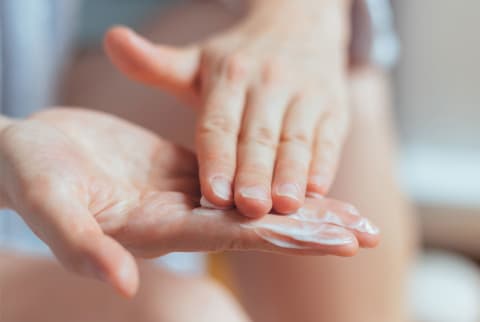Imagine: You’ve just treated yourself to an at-home manicure, the final stroke of top coat gleaming atop those tips. You take a moment to admire your handiwork: Your nondominant hand looks expert-level—like you just left the salon!—but your dominant hand looks a bit…shaky.
It’s a familiar struggle to find yourself in (unless you’re ambidextrous or a very confident painter), and before I heard this genius trick from Mytien Le, a nail specialist at sundays, I thought the only answer was to tidy up the smudges with polish remover after the fact. But as Le demonstrates over Zoom, you can prevent the botched paint job with a very simple step. Here’s exactly how she suggests painting with your nondominant hand—no cleanup required.
How to paint with your nondominant hand.
The trick? Simple: “Move your finger around and let it do the work for you,” says Le. Meaning, instead of maneuvering the paintbrush with unsteady fingers (which oftentimes leads to stray strokes), hold the brush at a straight-on angle and move your actual finger into place when you paint the sides of your nail. That way, you’re putting less work (and faith) into your nondominant hand and keeping the technique as easy as possible.
The same logic applies to filing with your nondominant hand: Says Le, hold the emery board or glass file at a head-on angle, moving your actual finger wherever you want to carve the shape. Just remember: Don’t “saw” at the nail with back-and-forth motions, as this can cause the keratin layers to split and fray; choose one direction to file and repeat with light, even strokes until you reach your desired nail shape. (Here’s our full guide to shaping your nails, if you’re curious.)
You might even want to do all the work with your nondominant hand first, so you can really grip the paintbrush without worrying about smudging your artistry. As someone whose polish projects often turn out toddler-like, I find it helpful to complete the entire mani with my weaker hand (base coat, polish, and top coat) before passing the polish to my more dexterous fingers.
Just make sure to let the coats dry for a beat between each layer and especially before you switch hands—sure, you’ll have to add extra wait time if you paint each hand separately, but for me, the pristine results are worth the extra few minutes.
When you’re painting your own nails, let your dominant hand do all the work for you—even when you’re painting those fingers. Simply swivel the nail from side to side rather than attempting to wield the brush at different angles. Chances are you’ll notice fewer smudges.








